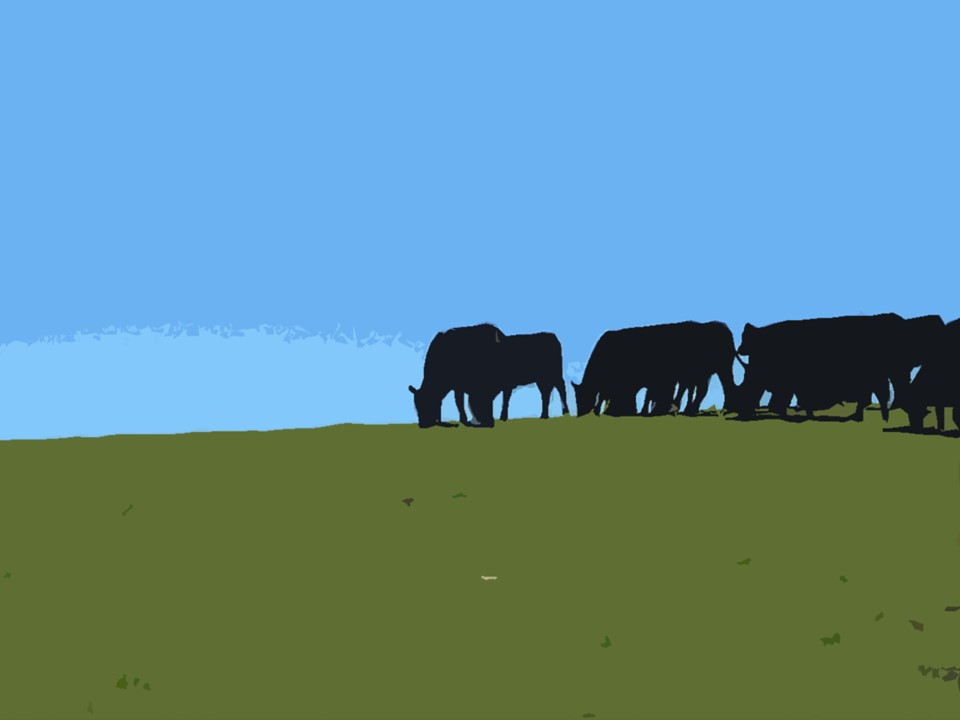DISCLOSURE: I am a member of the National Cattlemen’s Beef Association Beef Expert Bureau, which is funded by the Beef Checkoff.
On Tuesday, March 19, 2019 I co-presented on a webinar titled, “How Do We Feed the Future Without Eating the Planet? Examining the Human and Environmental Impacts of Beef Production.” The other presenter was Dr. Sara Place, the Senior Director of Sustainable Beef Production Research at National Cattlemen’s Beef Association, a contractor to the Beef Checkoff. You can access a recorded version of the webinar here.
Sara and I covered a lot of information about sustainable beef production and sustainable nutrition during 45-minutes. Our presentations were followed by a short, productive Q&A session. We were able to address many questions, but there were many that did not get addressed due to lack of time. This blog serves to address one of those unanswered questions. I’ll address other questions in future blogs.
What are the differences between grain-finished and grass-finished beef?
All cattle start their lives as grass fed. Grain-finished cattle eat corn and other grain for the last 4-6 months of their lives. Grass-finished cattle continue to eat grass. The longer cattle live, the more of an environmental impact they have in terms of land and water use as well as methane production because it takes longer for them to reach slaughter weight. Cattle produce more methane when they consume grass than grain.
If you’re choosing grass-finished beef because you enjoy the “beefier” flavor, buy it and enjoy it. Very little grass-finished beef produced in the United States; most of what is available is imported from South America and Australia.
In terms of nutrient content, there are few differences between grass-finished and grain-finished beef. Cattle in the U.S. have been bred to yield leaner beef, and through improved genetics, feedstuffs and animal care, U.S. beef is leaner than ever. Most beef sold at retail today is “lean” as defined by the United States Department of Agriculture (USDA). A cut of cooked fresh meat is considered “lean” when it contains less than 10 grams of total fat, 4.5 grams or less of saturated fat and less than 95 mg of cholesterol per 100 grams (3½ oz) and per RACC (Reference Amount Customarily Consumed), which is 85 grams (3 oz cooked).
How beef is butchered also has an impact. Today, beef is butchered to minimize external fat. Butchers use specialized equipment to trim visible fat to one-quarter of an inch or less. Ground beef is blended to create consistent fat content. If a package says “93% lean”, that means it contains 7 percent fat.
Many people think grass-finished beef is significantly higher in omega-3 fatty acids than grain-finished beef. Yes, grass-finished beef does contain more omega-3s than grain-finished, but the amount of omega-3s in grass-finished beef is minimal compared to other sources like fatty fish. A 3 oz. portion of grain-finished beef has about 39 milligrams of omega-3s, a 3 oz. portion of grass-finished beef has about 52 milligrams of omega-3s, and a 3 oz. serving of wild Atlantic salmon contains about 1,200 milligrams and a 3 oz. serving of farmed Atlantic salmon contains about 1,700 milligrams of omega-3s, based on USDA data found here. There are many reasons to choose nutrient-rich lean beef but choosing grass-finished over grain-finished for omega-3s is a misguided decision. There are better dietary sources of omega-3s. You can read more about recommended intakes and various dietary sources of omega-3s here.
I grew up eating both grain-finished and grass-finished beef. The grain-finished beef came from steers butchered in the spring that had been eating corn silage (and hay) during the cold winter months in North Dakota. The grass-finished beef came from steers butchered in the fall that had been grazing in pastures all summer and fall.
Today, I buy lean cuts of grain-finished beef from U.S. producers. I feel good knowing I’m choosing beef that has the lowest environmental impact as well as a range of essential nutrients that promote health, strength, and performance. I also feel good knowing I pair lean beef with whole grains, legumes, fruits, and vegetables to create a Mediterranean-style eating pattern my husband and I enjoy. It’s sustainable nutrition that benefits us as well as the planet. For more information about how beef is part of a healthy, sustainable diet, check out https://www.beefitswhatsfordinner.com/raising-beef/beef-in-a-sustainable-diet

